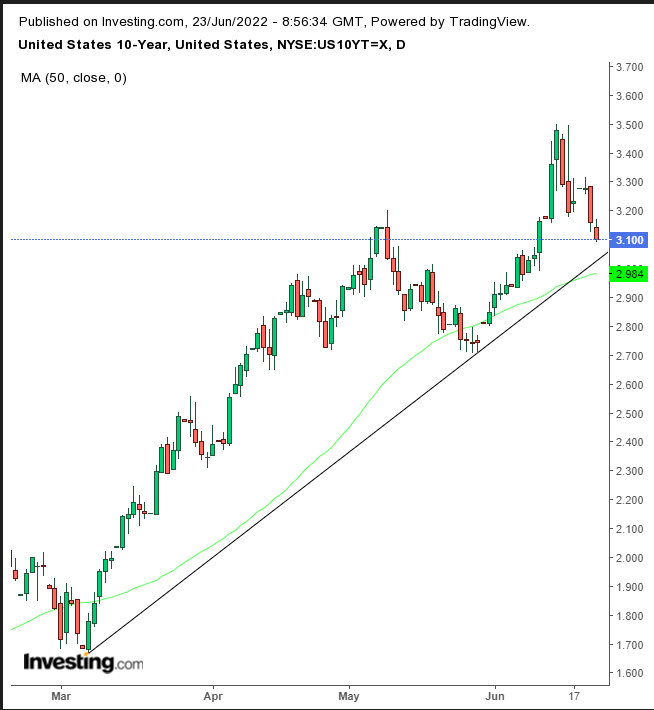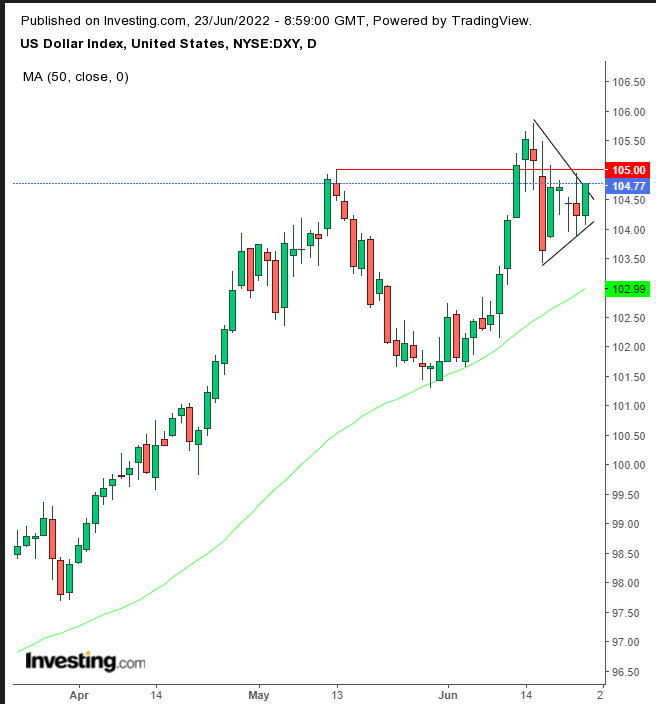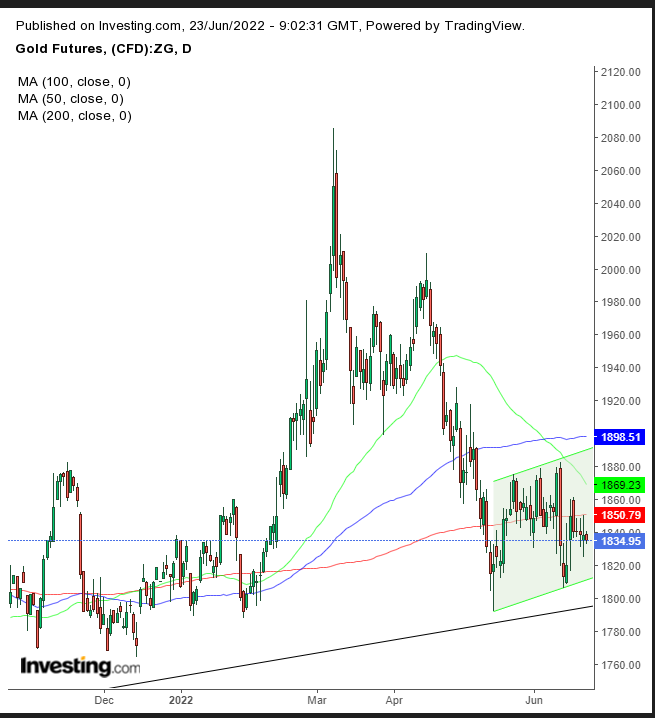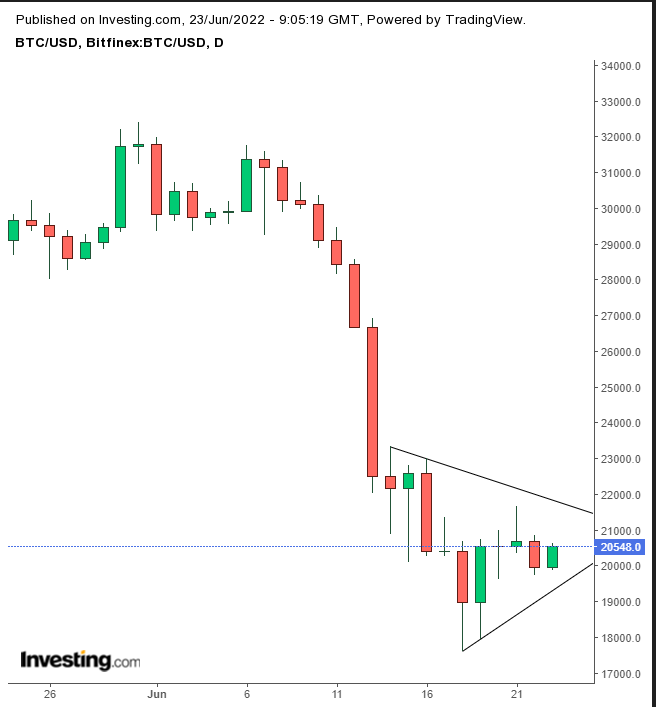- Powell admits recession is "certainly a possibility"
- But Fed boss said economy is strong
- Bitcoin rebounds
Key Events
On Thursday futures on the Dow Jones, S&P 500, NASDAQ 100, and Russell 2000 were marginally up while European stocks traded lower ahead of US Federal Reserve Chair, Jerome Powell's second day of testimony to Congress. Yesterday he conceded, in his semiannual monetary policy report that higher interest rates could cause a recession.
Oil fluctuated but remains above $105 as CEOs of seven oil majors are due to meet US President Biden at the White House.
Global Financial Affairs
NASDAQ 100 contracts rebounded into clear gains after the underlying index closed in the red yesterday. Futures on the S&P 500 Index also traded higher followed by Dow and Russell 2000 futures. We suspect today may see some volatility in markets as earlier all four contracts were trading in the red.
The European session opened lower, with the STOXX 600 Index falling to its lowest level since Feb 1, 2021. Energy and mining stocks underperformed as ongoing concerns of an economic downturn dented commodities. Investor sentiment was dented by the Fed Chair's comments, lower than expected PMI data and an S&P Global survey which showed euro zone business growth slowed significantly in June.
Asian markets were mixed, with inflation concerns dominating headlines. China's Shanghai Composite closed up 1.62%, outperforming while South Korea's KOSPI dropped 1.22% to its lowest level since Nov 2, 2020.
Powell's admission that the US central bank found it challenging to walk the fine line between taming inflation while maintaining a solid job market and avoiding a recession ended a two-day rally in US markets. However, the selloff was tempered by his reassuring remarks about the economy's strength.
Treasury yields on the 10-year note extended an advance, moving towards 3.1%.

Yields neared a triple support area: the May highs, the uptrend line since the Mar low, and the 50 DMA.
After a two-day decline, the dollar advanced. It may be developing a bullish pattern.

The greenback was testing the top of a pennant, bullish after the preceding five-day rally. However, the pattern is only complete upon an upside breakout. This continuation pattern is a market device to help it overcome resistances, such as the May highs.
Gold declined on dollar strength.

Technically, the yellow metal is out of sorts. A rising dollar is keeping it down, but there is still sufficient demand to maintain it within a short-term rising channel and a long-term uptrend (black). On the other hand, the 50 DMA slumped below the 100 DMA and is falling hard and may cross below the 200 DMA which would trigger a Death Cross.
Bitcoin climbed back above the psychological round $20K level.

The cryptocurrency is trading according to a pennant formation, bearish after the preceding seven-day-straight loss. A downside breakout will confirm our long-term bearish call. According to the principles of technical analysis, the digital currency's bearish pennant implies a target around $5K.
Oil moved between gains and losses and was just 0.7% lower at $105.3 at the time of writing.
Up Ahead
- UK retail sales are released on Friday.
- The University of Michigan consumer sentiment index is printed on Friday
- On Friday figures for US new home sales in May are published.
Market Moves
Stocks
- The German DAX was 0.6% down.
- London's FTSE 100 was up 0.2%
- The MSCI Asia Pacific Index was little changed
- The MSCI Emerging Markets Index was little changed
Currencies
- The euro fell 0.5% to $1.0517
- The Japanese yen fell 0.6% to 135.36 per dollar
- The British pound fell 0.5% to $1.2203
Bonds
Commodities
- Brent crude fell 0.4% to $111.27 a barrel
- Spot gold fell 0.5% to $1,829.51 an ounce
